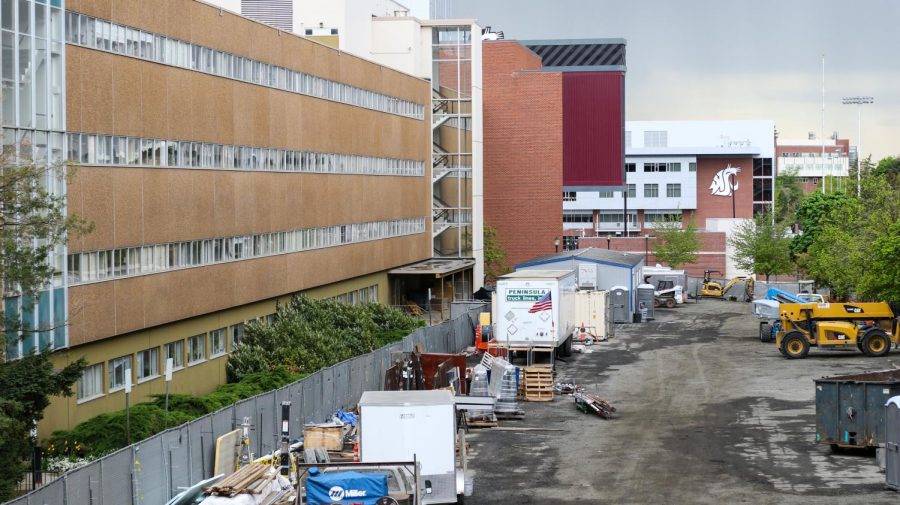USDA research facility will replace Johnson Hall
Plant Biosciences building will support USDA, WSU agricultural research; demolition of Johnson Hall will begin soon after funds are approved
JACQUI THOMASSON | DAILY EVERGREEN FILE
The USDA Plant Biosciences building will be the fifth addition to the university’s Research and Educational Complex.
February 3, 2021
WSU plans to replace Johnson Hall with a new federally-funded USDA research building as an addition to the university’s modern research complex.
Richard Koenig, chair of WSU’s Department of Crop and Soil Sciences, said WSU has wanted to build the USDA Plant Biosciences building for decades. The facility will be the fifth addition to the university’s Research and Educational Complex, supporting USDA and WSU agricultural research.
Johnson Hall was constructed in 1961 and has never been renovated. Koenig said the cramped and outdated spaces in Johnson Hall make it difficult for researchers to conduct their research.
Johnson Hall costs over $1 million annually to operate and fails to comply with numerous fire codes. It also has a $29 million deferred maintenance backlog, according to WSU’s 2020 Project Proposal Checklist.
To stay operational, the fire alarm system, elevators, IT Infrastructure and other essential equipment need to be replaced. Koenig said the asbestos-filled interior of Johnson Hall makes remodeling dangerous and expensive.
“This building is old and highly inefficient,” he said.
WSU would have demolished the building earlier, but the state could not support the project once the 2020 economic recession started, Koenig said.
Chris Mulick, WSU’s Director of State Relations, is lobbying in Olympia for the $8 million needed to demolish Johnson Hall, which would serve as the new facility’s site.
“That building is going to be built,” Mulick said. “There’s no question about it.”
Koenig said the new USDA building will be smaller than Johnson Hall. Designers strategically place labs, offices and utilities to adapt over time to meet researchers’ changing needs.
One of the biggest obstacles will be relocating all the programs currently housed in Johnson Hall, he said. A variety of programs consisting of 330 people from the USDA and the university occupy Johnson Hall.
WSU project manager Jason Baerlocher said there are initiatives to make the new building as sustainable as possible. Designers are looking at various fuel sources for the USDA building, but there is no final decision yet.
He said the USDA is designing the building to conform with WSU and the REC’s structural theme. A center core runs along each of the facilities, keeping them all interconnected; construction crews will extend the spine to connect the new addition.
It could be years until the university finishes, he said. Planning for the demolition of Johnson Hall would begin soon after funds are approved.






















